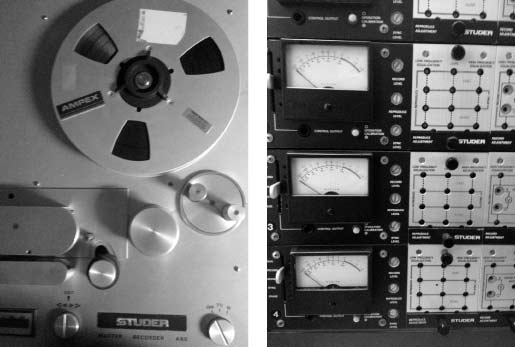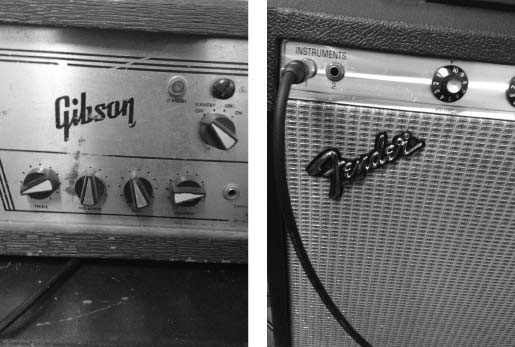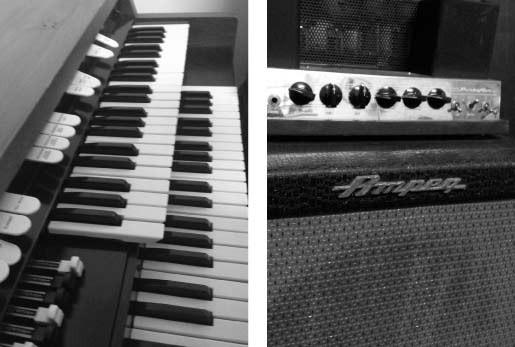The studio is the beating heart of Bobonne Records’ operation. It’s where the music is transformed from a great idea to a physical entity.
For our studio, we have chosen for an all-analog set-up, a rare thing in a world that has been increasingly dominated by digital means.
So then why do we opt for the hard way of doing things? Simply put: because it really is worth it. Don’t get me wrong, though. Obviously the digital revolution, which has taking place since Soundstream’s DAT at the end of the seventies and the eventual and now deemed irrefutable Pro Tools is, in many ways, a very positive development. Digital audio processing offers so many solutions to problems that occurred when recording and mixing on physical tape. Never before was it so easy to edit, adjust, retry, and manipulate recordings using one of an uncountable number of plug-ins and program features. This, then, could be considered as using digital means as an instrument rather than a crutch. However, somehow music production (as well as film production, but that is another matter) has shifted its focus from the recording process to the mixing and mastering process. Too often, mediocre recordings are now fixed at the click of a button, taking away the liveliness and human aspect of music from the recording. With an analog medium, as far as performances are concerned, the artist has one of two options: either he learns to live with the mistakes he/she put on tape, or he decides to start over. Clearly, this will cause a lot of frustration during the recording process, but the result is that the sense of achievement will be far greater — you actually did it on your own, and you needed to play damn well to get there.
Another important aspect of magnetic tape, or of any other analog medium for that matter, is that it stays most true to the reality it records. Whereas digital recording processes focus on a clean, “perfect”, sound without artifacts, magnetic tape leaves room for the pink and white noises inherent to reality. Also, with analog tape, or a vinyl pressing of a recording, the performance is essentially presented as a single and continuous sound wave, which thus follows closely the natural character of sound. By digitalizing music, however, the recording process becomes a division of the continuous sound wave into several one-or-zero-moments – better known as bits. As technology evolves, the number of bits per moment increases, and the moments become more and more detailed. However, digital media will never be able to fully capture the continuousness of a natural sound. It is therefore often said that while analog media are about the approximation of perfection, digital media are focused on the perfection of approximation.
Obviously, we could talk on and on about all of the merits and problems that come with recording on tape – and I would and have been known to ramble on about it. If you do feel like sharing your thoughts, feel free to swing by Bobonne Records, or contact me at [email protected].
We would love to record your singles, EPs, and LPs. It’s what we do.
Equipment (provisional, work-in-progress):
D&R Triton 24-channel analog mixing console
Studer A-80 8-track 1”-tape machine (1962)
Klipsch and NS-10 monitors
Drawmer 1960 stereo tube compressor
Summit Audio TLA-100A tube compressor
An array of condensor, dynamic and ribbon mics from Electro-Voice, AKG, Audio-Technica, Shure, Coles, …
Present backline (We can get hold of pretty much anything. If you’re looking for something specific, we’ll go find it.):
Fender (Pro Jr. (2000s), Superchamp (1982), Musicmaster Bass 6V6 (1979)) amps
Ampeg (B-15N (1962), GVT15-112 (2009)) amps
Gibson Titan III (1964) 6L6 amp with Sound City L80 “Dallas Era” (1974) 4×12 cab
Gibson LG-1 acoustic (1964), ES-135 (1992), EB-2D bass (1964), L-9S The Ripper bass (1972)
Fender Telecasters, Stratocaster, Jazzmaster, Jaguar, Precision Bass
Harmony H-74 (1965) Teisco (1960s) National Pocket Bass (1959)
Philicorda GM751 tube transistor organ (1960s), Hammond L-101 w/ Leslie 110 (1962), Leonhardt portable suction reed organ (1887), Fender Rhodes 88 MK 1 (1970s), Nord Lead, …
Full Ludwig Club Date SE “Fab Three” drumkit (2012)
… and many more.





